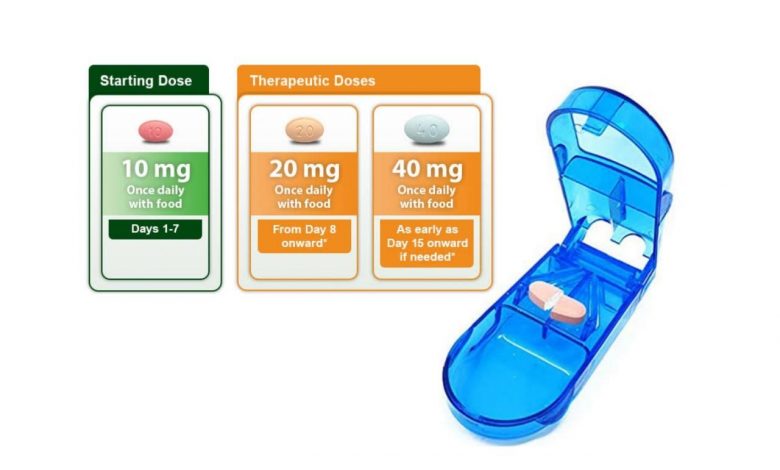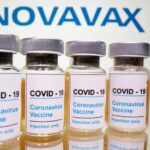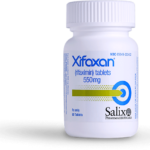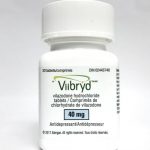Can Viibryd Be Cut In Half? Frequently Asked Questions (FAQs)

What is Viibryd?
Viibryd is a brand of Vilazodone a medication used to treat depression. Viibryd is an SSRI (selective serotonin reuptake inhibitor) and partial serotonin receptor agonist and works by helping to restore the balance of certain natural substances in the brain (neurotransmitters such as serotonin). This medication may improve your mood, sleep, appetite, and energy level and may help restore your interest in daily living.
Can Viibryd be cut in half?
Yes, Viibryd comes as an oral tablet that is not scored but can be split in half using a pill cutter. Viibryd is usually taken with food once a day. Take Viibryd at around the same time every day.
Follow the directions on your prescription label carefully, and ask your doctor or pharmacist to explain any part you do not understand. Take Viibryd exactly as directed. Do not take more or less of it or take it more often than prescribed by your doctor.
Your doctor will probably start you on a low dose of Viibryd and gradually increase your dose, not more than once every 7 days.
Viibryd controls depression but does not cure it. It may take several weeks before you feel the full benefit of Viibryd. Continue to take Viibryd even if you feel well. Do not stop taking Viibryd without talking to your doctor. Your doctor will probably decrease your dose gradually. If you suddenly stop taking Viibryd, you may experience withdrawal symptoms such as dizziness; nausea; headache; confusion; irritability; agitation; difficulty falling asleep or staying asleep; anxiety; extreme tiredness; seizures; pain, burning, or tingling in the hands or feet; or sweating. Tell your doctor if you experience any of these symptoms while you are decreasing your dose of Viibryd or soon after you stop taking Viibryd.
Frequently asked questions (FAQs)
Is Viibryd a controlled substance?
No, Viibryd is not a controlled substance under the Controlled Substances Act (CSA) which places all substances into one of five schedules. This placement is based upon the substance’s medical use, the potential for abuse, and safety or dependence liability.
While Viibryd is less likely than other types of antidepressants to cause addiction, it is possible. A person may also develop a physical tolerance, which can make it very difficult to stop using Viibryd.
How effective is Viibryd?
In clinical studies, people with MDD took either Viibryd or a placebo for 8 to 10 weeks. (A placebo is a treatment with no active medication.) Depression symptoms eased more in the Viibryd group than in the placebo group.
The symptoms were tracked with a tool called the Montgomery-Asberg Depression Rating Scale (MADRS). The MADRS rates severity of depression with a score between 0 and 60, and higher scores mean more severe depression. The scores of people who took Viibryd were between 2.5 to 5.1 points lower than people who took a placebo. This means that the Viibryd group had fewer symptoms or less severe symptoms.
Does Viibryd cause weight gain?
Yes, but it is not a common side effect. In studies, only 2% of people who took 40-mg doses of Viibryd gained weight. This was compared to 1% of people who took 20-mg doses of Viibryd and 1% of people who took a placebo. (A placebo is a treatment with no active medication.)
Some people had an increase in appetite when taking Viibryd. In studies, 3% of people who took 40-mg doses of Viibryd reported this side effect. This was compared to 1% of people who took 20-mg doses of Viibryd and 1% of people who took a placebo. An increase in appetite may lead to weight gain.
If you notice changes in your weight or appetite that are bothersome to you, let your doctor know. They can work with you to adjust your diet or explore other treatment options. In Viibryd studies, the average weight gain ranged from about 0.35-1.3 pounds.
Who should not take Viibryd?
Do not take Viibryd if you take a monoamine oxidase inhibitor (MAOI), have taken or will take an MAOI within 14 days of taking Viibryd, or are being treated with the antibiotic linezolid or intravenous methylene blue.
Viibryd may cause other serious side effects, including:
Serotonin Syndrome: A potentially life-threatening problem that can happen when Viibryd is taken with certain other medicines. Stop taking Viibryd and call your healthcare provider or go to the nearest emergency room right away if you have any of the following: agitation; hallucinations; confusion, coma; fast heartbeat; blood pressure changes; dizziness; sweating; flushing; high body temperature; tremors, stiff muscles, or muscle twitching; loss of coordination; seizures; nausea, vomiting or diarrhea.
Increased chance of bleeding: Taking Viibryd with aspirin, non-steroidal anti-inflammatory drugs (NSAIDs), warfarin, or blood thinners may add to this risk. Tell your healthcare provider right away about unusual bleeding or bruising.
Manic episodes: Symptoms may include greatly increased energy; severe trouble sleeping; racing thoughts; reckless behavior; unusually grand ideas; excessive happiness or irritability; talking more or faster than usual.
Discontinuation symptoms: Do not suddenly stop Viibryd without first talking to your healthcare provider. Stopping Viibryd suddenly may cause serious side effects including nausea; sweating; changes in mood; headache; irritability and agitation; tiredness; dizziness; problems sleeping; electric shock sensation; hypomania; anxiety; ringing in your ears; confusion; seizures.
Seizures or convulsions
Glaucoma (angle-closure glaucoma): Viibryd may cause an eye problem called angle-closure glaucoma. Call your healthcare provider if you have changes in your vision or eye pain.
Low salt (sodium) levels in the blood: Maybe serious and may cause death. Elderly people may be at greater risk for this. Symptoms may include headache; difficulty concentrating; memory changes; confusion; weakness and unsteadiness which can lead to falls.
In severe or more sudden cases, symptoms include hallucinations; fainting; seizures; coma; respiratory arrest; death
Sexual problems: Taking Viibryd may cause sexual problems. Talk to your healthcare provider if you develop any changes in your sexual function or if you have any questions or concerns about sexual problems during treatment
Why is Viibryd so expensive?
The average cash price of Viibryd is around $389. Viibryd is expensive because it is only available as a brand-name medication. For this reason, it may be a more expensive option compared to other antidepressants. Some Medicare and insurance plans may cover Viibryd.
Does Viibryd make you tired?
Fatigue is a common side effect reported by many users on Reddit. However, Fatigue isn’t likely with Viibryd. Fatigue was reported in 3% to 4% of people in clinical studies, whether they took Viibryd or a placebo. If you notice a change in your energy level or are sleepy during the day, talk with your doctor. They can suggest treatment options to help you.
How long does it take for Viibryd to work?
Sleep, energy, or appetite may show some improvement within the first 1-2 weeks. Improvement in these physical symptoms can be an important early signal that the medication is working. Depressed mood and lack of interest in activities may need up to 6-8 weeks to fully improve.
Is Viibryd good for anxiety?
Studies have shown that 20 mg or 40 mg of Viibryd may help ease symptoms of moderate or severe anxiety within 8 weeks. Anxiety symptoms eased more in people who took Viibryd than in those who took a placebo.
Does Viibryd cause any sexual side effects?
According to clinical studies, it’s possible. Sexual side effects of Viibryd included erectile dysfunction, abnormal orgasm, decrease in sex drive, and abnormal ejaculation. In the studies, up to 4% of people who took Viibryd had sexual side effects, compared to up to 1% of people who took a placebo. (A placebo is a treatment with no active medication.) For more information on the research, see “Sexual side effects” in the “Viibryd side effects” section above. Sexual side effects are fairly common with antidepressants and other medications are taken for conditions such as depression and anxiety. Certain antidepressants such as bupropion (Wellbutrin XL) and mirtazapine (Remeron) are less likely to cause these side effects than others.
Can I drink alcohol while on Viibryd?
No, you should avoid drinking alcohol while you are taking Viibryd. It can increase some of the side effects including dizziness, drowsiness, and difficulty concentrating. Food significantly increases the absorption of Viibryd. You should take Viibryd with a meal, preferably at the same time each day.





